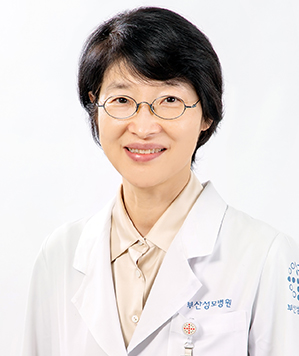Pulmonology

Pulmonology
- Inquiry
- +82-51-933-7242
- Outpatient Clinic Location :
- 2nd Floor
Introduction of Medical Department
-
It is a field of internal medicine that deals with diseases of the bronchial tubes, lungs, and pleura related to breathing. Infectious diseases such as pneumonia, tuberculosis, and bronchiectasis, chronic obstructive pulmonary diseases such as asthma, pulmonary emphysema and chronic bronchitis, intrathoracic tumors such as lung cancer and mediastinal tumors, various pleural diseases, pulmonary fibrosis, and interstitial lung diseases. In addition, we are in charge of diagnosing and treating the causes of chronic cough, expectoration, dyspnea, and hemoptysis. Patients with respiratory failure are treated on an artificial ventilator in a internal medical intensive care unit. The pulmonary function laboratory is equipped with the latest equipment for asthma and allergy tests (dosimeters), including general spirometry. In addition, we conduct diagnosis and examination through bronchoscopy.
Bronchial Asthma
It is a common respiratory disease that occurs in about 10% of the total population and is divided into allergic asthma and non-allergic asthma. Recently, the prevalence of asthma has been increasing as air pollution has become serious. Symptoms vary and include shortness of breath, wheezing, chest tightness, and coughing. However, there is also cough-type asthma that only coughs, so if the cough continues for a long time without any particular reason, it is recommended to be treated by a respiratory specialist. Diagnosis is made through clinical symptoms, chest x-ray, pulmonary function test, and bronchial provocation test.
Chronic Obstructive Pulmonary Disease
Chronic bronchitis or pulmonary emphysema is a disease that progresses and restricts airflow, resulting in difficulty in breathing. It is often known as geriatric cough asthma, but in reality, the pathogenesis is different from asthma, and thus the treatment is also different. Diagnosis is made through clinical symptoms, chest x-rays, and pulmonary function tests.
Tuberculosis
Tuberculosis is an infectious disease that can occur anywhere in the human body, including not only the lungs but also the pleura, meninges, spine, bones, esophagus, and gastrointestinal tract. Compared to the past, the prevalence and incidence have decreased significantly, but as AIDS infection increases, the incidence of tuberculosis is also increasing. Pulmonary tuberculosis is diagnosed by chest x-ray and sputum examination.
Lug Cancer
As cancer has occurred in the lungs, it can be divided into cases where cancer has occurred primarily in the lungs (primary lung cancer) and cases where cancer has spread to the lungs from other areas (metastatic lung cancer). Smoking is the most important cause of lung cancer, and genetic predisposition or environmental and occupational factors are also involved. Since there are no specific symptoms until it progresses, early diagnosis and treatment become difficult. Depending on the cell type, it is classified into squamous cell carcinoma, adenocarcinoma, large cell carcinoma, and small cell carcinoma, among which squamous cell carcinoma is the most common. Diagnosis is made by chest radiography, sputum cytology, computed tomography, and bronchoscopy. Recently, positron emission tomography (PET-CT) is used to diagnose metastases.
Interstitial Lung Disease
It is a disease in which the lungs gradually become fibrotic, that is, become hardened, due to various causes. In the beginning, you feel difficulty breathing only during exercise, but as the disease progresses, you will complain of difficulty breathing even when you are motionless. Diagnosis is made with chest x-ray, computed tomography, and pulmonary function tests, and sometimes a lung biopsy is required.
Snoring and Sleep Apnea Syndrome
Simple snoring ends only when noise causes problems in communal life. However, if it is accompanied by apnea, it increases complications such as cardiovascular disease or stroke, and the long-term mortality rate is significantly higher than that of normal people, so appropriate treatment is required. When 5 or more apneas occur per hour of sleep, it is called sleep apnea syndrome. It occurs in 1 to 4% of the total population and is a relatively common disease observed in old age. Snoring, interruption of breathing during sleep, and daytime sleepiness are the main symptoms, and it is diagnosed through polysomnography.
The Department of Pulmonary at Busan St. Mary's Hospital treats various respiratory and allergic diseases that are recently increasing. In particular, we provide treatment, education, and research on bronchial asthma, chronic obstructive pulmonary disease, bronchiectasis, tuberculosis, pneumonia, lung cancer, interstitial lung disease, pleural disease, acute respiratory failure, snoring, and sleep apnea. To diagnose this, bronchoscopy, pulmonary function test, bronchial provocation test, allergy test, and polysomnography are conducted.
Introduction of medical staff

Young-Mi Choi

Kyung-Hwa Shin
- There may be a slight delay in the connection between 10:00 AM to 11:00 AM due to the high volume of phone calls. Please kindly understand that.
Medical Department
- Endocrinology
- Rheumatology
- Anesthesiology and Pain Medicine
- Pathology
- Urology
- Gynecology
- Pediatrics
- Gastroenterology
- Cardiology
- Neurology
- Neurosurgery
- Nephrology
- Ophthalmology
- Palliative Medicine
- Radiology
- General Surgery
- Emergency Medicine
- Otolaryngology
- Rehabilitation Medicine
- Neuropsychiatry
- Orthopedic Surgery
- Laboratory Medicine
- Dentistry
- Nuclear Medicine
- Hemato-Oncology
- Pulmonology

